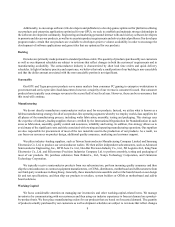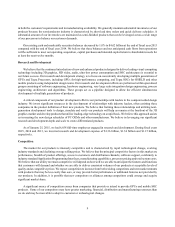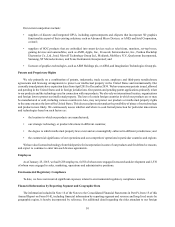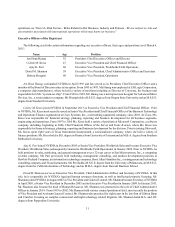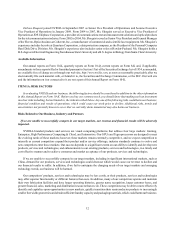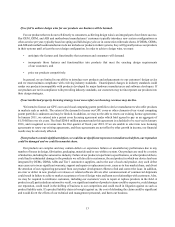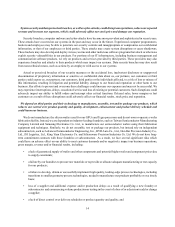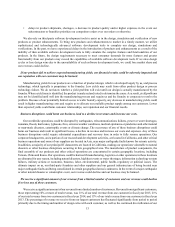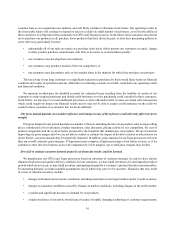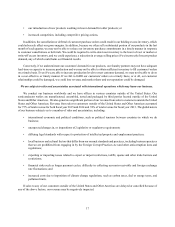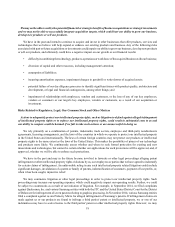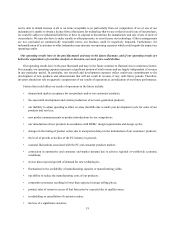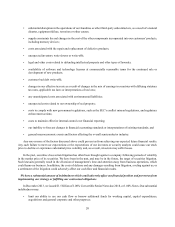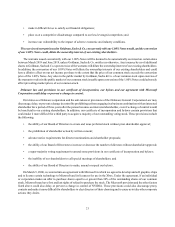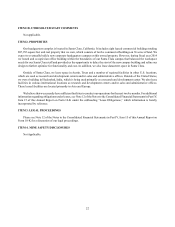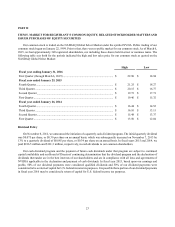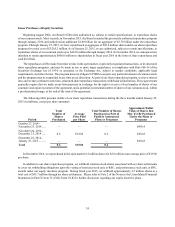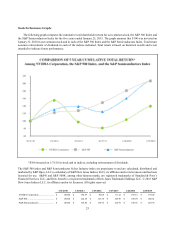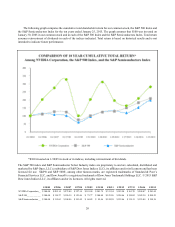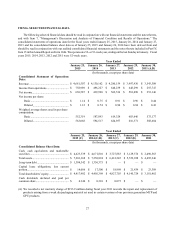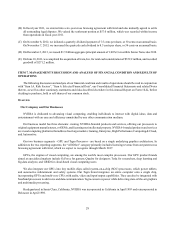NVIDIA 2015 Annual Report Download - page 98
Download and view the complete annual report
Please find page 98 of the 2015 NVIDIA annual report below. You can navigate through the pages in the report by either clicking on the pages listed below, or by using the keyword search tool below to find specific information within the annual report.18
We may not be able to realize the potential financial or strategic benefits of business acquisitions or strategic investments
and we may not be able to successfully integrate acquisition targets, which could hurt our ability to grow our business,
develop new products or sell our products.
We have in the past and intend to continue to acquire and invest in other businesses that offer products, services and
technologies that we believe will help expand or enhance our existing products and business. Any of the following risks
associated with past or future acquisitions or investments could impair our ability to grow our business, develop new products
or sell our products, and ultimately could have a negative impact on our growth or our financial results:
• difficulty in combining the technology, products, operations or workforce of the acquired business with our business;
• diversion of capital and other resources, including management's attention;
• assumption of liabilities;
• incurring amortization expenses, impairment charges to goodwill or write-downs of acquired assets;
• potential failure of our due diligence processes to identify significant issues with product quality, architecture and
development, or legal and financial contingencies, among other things; and
• impairment of relationships with employees, vendors and customers, or the loss of any of our key employees,
vendors or customers or our target's key employees, vendors or customers, as a result of our acquisition or
investment.
Risks Related to Regulatory, Legal, Our Common Stock and Other Matters
Actions to adequately protect our intellectual property rights, such as litigation to defend against alleged infringement
of intellectual property rights or to enforce our intellectual property rights, could result in substantial costs to us and
our ability to compete could be harmed if we fail to take such actions or are unsuccessful in doing so.
We rely primarily on a combination of patents, trademarks, trade secrets, employee and third-party nondisclosure
agreements, licensing arrangements, and the laws of the countries in which we operate to protect our intellectual property
in the United States and internationally. The laws of certain foreign countries may not protect our products or intellectual
property rights to the same extent as the laws of the United States. This makes the possibility of piracy of our technology
and products more likely. We continuously assess whether and where to seek formal protection for existing and new
innovations and technologies, but cannot be certain whether our applications for such protections will be approved, and, if
approved, whether we will be able to enforce such protections.
We have in the past and may in the future become involved in lawsuits or other legal proceedings alleging patent
infringement or other intellectual property rights violations by us, our employees or parties that we have agreed to indemnify
for certain claims of infringement. An unfavorable ruling in any such intellectual property related litigation could include
significant damages, invalidation of a patent or family of patents, indemnification of customers, payment of lost profits, or,
when it has been sought, injunctive relief.
We may commence litigation or other legal proceedings in order to protect our intellectual property rights. Such
proceedings may increase our operating expenses, which could negatively impact our operating results. Further, we could
be subject to countersuits as a result of our initiation of litigation. For example, in September 2014, we filed complaints
against Qualcomm, Inc. and various Samsung entities with both the ITC and the United States District Court for the District
of Delaware for infringement of seven patents relating to graphics processing. In November 2014, various Samsung entities
filed a complaint against us and Velocity Micro for alleged infringement of Samsung’s patents. If infringement claims are
made against us or our products are found to infringe a third parties' patent or intellectual property, we or one of our
indemnitees may have to seek a license to the third parties' patent or other intellectual property rights. However, we may


